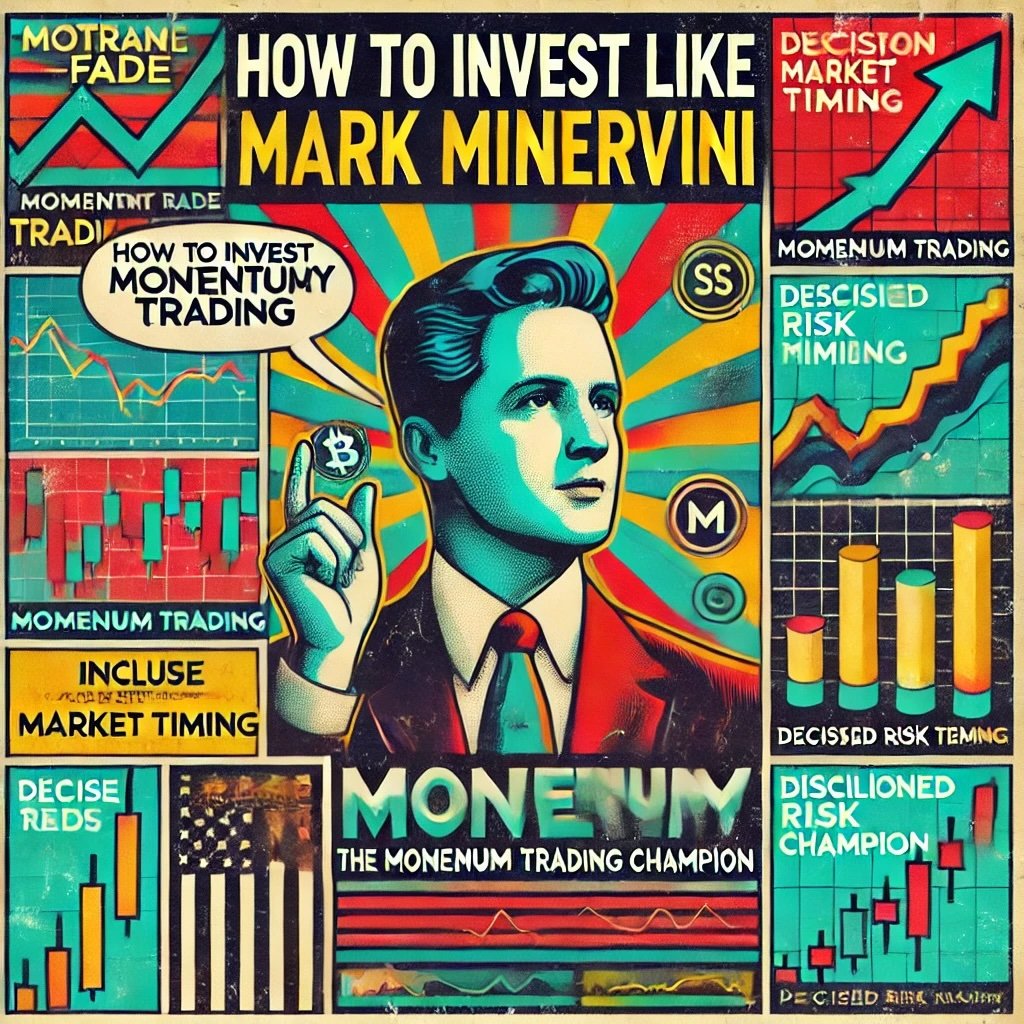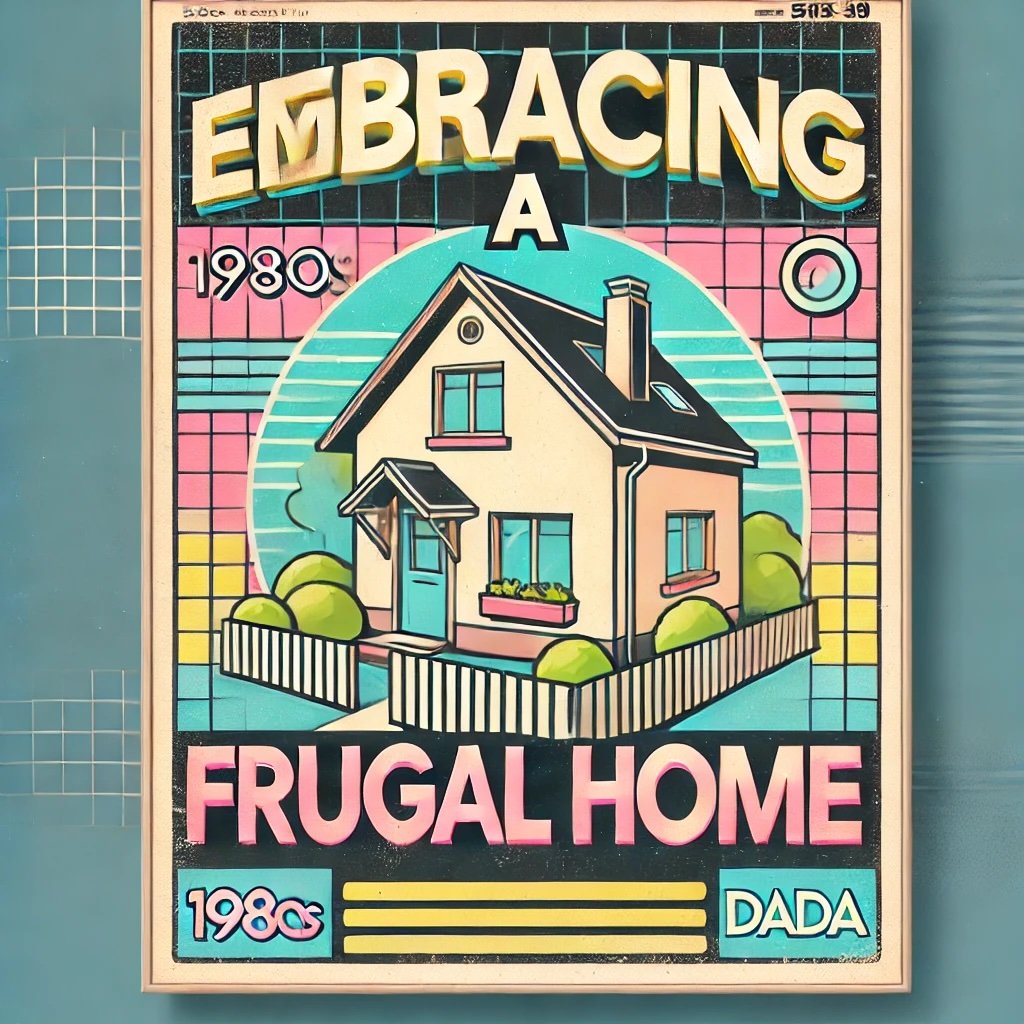Housing markets. They’re the beating heart of our economy, pulsing with activity as homes are bought, sold, and rented every day. But what exactly is a housing market? At its core, the housing market is the arena where homes and properties are traded—where supply meets demand, and where prices are set based on a myriad of factors. From bustling cities to quiet suburbs, these markets are a key indicator of economic vitality.
source: Spencer Gatten on YouTube
Overview of Housing Markets
But here’s the thing: housing markets don’t operate in a vacuum. They have a far-reaching influence that extends well beyond the realm of real estate. When housing markets boom, they can lift entire industries along with them. Conversely, when they falter, the shockwaves can be felt across various sectors of the economy. This interconnectedness is what we call the “ripple effect,” and it’s a force that can shape the economic landscape in ways both obvious and subtle.

Importance of Understanding the Ripple Effect
Why should we care about the ripple effect? Because housing markets are more than just a place to buy or sell a home. They’re a barometer for the broader economy, signaling trends and shifts that can impact everything from construction jobs to retail sales. When housing markets are strong, they often bring prosperity to related industries. But when they weaken, the fallout can be widespread and lasting.
We’ll dive into that very interconnectedness—exploring how housing markets influence other industries, often in ways we might not immediately recognize. Whether it’s the boom in home improvement stores during a housing surge or the strain on financial institutions during a market downturn, the ripple effect is both powerful and pervasive. Understanding these connections isn’t just academic; it’s essential for anyone looking to grasp the full picture of economic health. So, let’s take a closer look at how these ripples spread and what they mean for the industries that depend on housing markets.

Construction and Home Improvement Industries
Direct Impact on Construction
When housing demand goes up, so does the hammering and drilling. Housing demand is the engine that drives construction activity. When more people are looking to buy homes, the need for new houses, condos, and apartments skyrockets. This surge in demand fuels construction projects, from sprawling suburban developments to towering urban high-rises.
In a booming housing market, job creation in construction sees a significant boost. Builders, contractors, electricians, plumbers—they all find themselves in high demand. The industry flourishes, creating jobs and pumping money into the economy. But when the housing market cools, the ripple effect is immediate. Construction projects slow down, layoffs become more common, and the once-thriving construction sector can struggle to stay afloat. The connection is clear: the health of the housing market directly influences the vitality of the construction industry.
Home Improvement and Renovation
It’s not just new construction that feels the impact of housing market trends—the home improvement and renovation sectors are closely tied to housing booms as well. When the market is hot, homeowners often look to cash in on rising property values by investing in renovations. Kitchens get remodeled, bathrooms updated, and extensions built, all in the name of increasing a home’s worth.
This uptick in renovation activity has a cascading effect on related sectors. Suppliers of building materials see their sales soar, with everything from lumber to fixtures flying off the shelves. Contractors and tradespeople find their schedules booked solid, as more homeowners seek to enhance their properties. Even interior designers get in on the action, helping homeowners create spaces that reflect the latest trends and maximize resale value.
In short, a booming housing market doesn’t just benefit those buying and selling homes. It stimulates a whole ecosystem of industries that thrive on the desire to build, improve, and beautify. But when the market slows down, so does the demand for renovations, leaving these industries to grapple with the consequences of a cooling housing sector.

Financial Services Industry
Mortgage Lending
In the world of housing, banks and financial institutions are the gatekeepers. They provide the loans that turn homeownership from a dream into a reality. Mortgage lending is at the core of housing finance—without it, the market would grind to a halt. But here’s the thing: mortgage lending is deeply intertwined with the ups and downs of the housing market.
When the housing market is booming, mortgage lending volumes soar. Banks are eager to issue loans, riding the wave of high demand. Profits rise as more people take on mortgages, and the financial services industry enjoys a period of robust growth. But it’s not all smooth sailing. When the market cools, lending slows down. Fewer people are buying homes, which means fewer loans are being issued. Profitability takes a hit, and banks may tighten their lending standards, making it harder for potential buyers to secure financing. The relationship between housing markets and mortgage lending is a delicate balance, one that can shift quickly with market fluctuations.
Insurance and Real Estate Investment
Let’s not forget about insurance—a critical, though sometimes overlooked, piece of the housing puzzle. Property insurance is essential for homeowners, protecting them from the financial fallout of disasters and unforeseen events. But as property values rise and fall, so too does the insurance landscape. When housing markets are hot, insurance premiums often increase, reflecting the higher value of homes. Conversely, in a declining market, property insurance might become more affordable, but insurers also face higher risks if property values drop below the mortgage amounts.
Now, consider the role of real estate investment trusts (REITs) and other financial products tied to property values. REITs allow investors to pool their money and invest in real estate portfolios, often yielding attractive returns when the housing market is strong. But the fortunes of REITs are closely linked to the health of the housing market. When property values rise, REITs tend to perform well, attracting more investors and driving up their value. However, if the market falters, the performance of these investments can suffer, leading to lower returns or even losses.
In essence, the financial services industry is inextricably linked to the housing market. Whether through mortgage lending, property insurance, or real estate investment products, the ripple effects of housing market trends are deeply felt in the financial world. The stakes are high, and the outcomes can be unpredictable, making this industry both a driver and a responder to changes in housing markets.

Retail and Consumer Goods
Home Furnishings and Appliances
There’s something about a new home that just begs for a fresh start. When people buy homes, they’re not just investing in property—they’re investing in a lifestyle. And that often means out with the old, in with the new, especially when it comes to furnishings and appliances. The correlation is clear: as home purchases increase, so does the demand for everything that makes a house a home.
Housing market trends play a big role in this. When the market is booming and homes are selling like hotcakes, retailers of furniture, appliances, and home décor can barely keep up. Sales of major appliances—think refrigerators, ovens, washing machines—tend to spike as new homeowners look to outfit their kitchens and laundry rooms with the latest and greatest. Furniture stores also see an uptick in business, as buyers are eager to fill their new spaces with sofas, beds, and dining sets that match their upgraded surroundings.
But what happens when the housing market slows down? Demand for these goods can drop just as quickly. If fewer people are buying homes, fewer people are buying the things that go inside them. Retailers feel the pinch, and the ripple effect can extend to manufacturers and suppliers, leading to slower production and potential layoffs. It’s a cycle that closely mirrors the rise and fall of the housing market itself.
Consumer Spending Patterns
Let’s talk about the broader impact of housing on consumer spending. When home values are rising, homeowners often feel a little richer—on paper, at least. This is known as the housing wealth effect. As equity in their homes grows, people are more likely to spend money on other goods and services. They might splurge on a vacation, upgrade their car, or finally renovate that bathroom. Consumer confidence soars, fueled by the belief that their most significant asset—their home—is steadily increasing in value.
Refinancing also plays a part. When interest rates are low and home values are high, homeowners might refinance their mortgages, freeing up cash that they can then spend on everything from electronics to education. This influx of spending can boost the retail sector and drive economic growth. But there’s a flip side. If the housing market takes a downturn, consumer confidence can wane just as quickly. People become more cautious with their money, tightening their belts and cutting back on discretionary spending. The ripple effect is real, and it can significantly impact retailers and the broader economy.

Technology and Smart Home Industries
Growth of Smart Home Technology
There’s no denying it—technology has become an integral part of our homes. And as housing markets boom, the demand for smart home devices skyrockets. Think about it: When someone buys a new home, they’re often eager to outfit it with the latest tech, from smart thermostats and lighting systems to security cameras and voice-controlled assistants. These gadgets not only add convenience but also a touch of futuristic flair that today’s homeowners crave.
Housing trends play a significant role in driving innovation in the tech sector. As more people invest in smart homes, tech companies are constantly pushed to create newer, better, and more integrated devices. The competition to offer the most advanced smart home solutions intensifies, leading to rapid advancements in the industry. During housing booms, the appetite for these devices only grows, fueling a cycle of innovation and consumer adoption. The result? A tech landscape that’s increasingly focused on making homes not just places to live, but hubs of connected, intelligent systems.
Real Estate Technology
But it’s not just what’s inside the home that’s getting a tech makeover—the entire process of buying and selling real estate has gone digital. The rise of online real estate platforms has transformed the way people search for homes. Gone are the days of flipping through newspaper listings or relying solely on a real estate agent’s network. Today, buyers and sellers can browse properties, schedule viewings, and even make offers, all from the comfort of their smartphones or laptops.
This shift has opened the door for a wave of digital tools designed to make the real estate process smoother and more efficient. Virtual tours have become a game-changer, allowing potential buyers to explore properties from anywhere in the world. Property management software streamlines everything from rent collection to maintenance requests, making life easier for landlords and tenants alike. These innovations aren’t just trends—they’re becoming the new standard in the industry, driven by a tech-savvy consumer base that expects speed, convenience, and transparency.
For tech companies, this represents a massive opportunity. The intersection of real estate and technology is a rapidly expanding market, with room for continued growth as more people embrace digital solutions. From AI-driven property valuation tools to blockchain-based transaction systems, the possibilities are endless. As housing markets evolve, so too does the technology that supports them, creating a dynamic, ever-changing landscape that’s ripe for innovation.

Hospitality and Tourism
Impact on Short-Term Rentals and Vacation Homes
The housing market doesn’t just affect those looking for a place to live—it also plays a significant role in the world of vacation homes and short-term rentals. When housing markets are hot, the demand for vacation properties often follows suit. People with disposable income are more likely to invest in second homes, be it a cozy cabin in the mountains or a beachside retreat. And with platforms like Airbnb making it easier than ever to rent out these properties, short-term rentals become a booming business.
But there’s more to it than just an increase in vacation home purchases. Housing booms can lead to a surge in local tourism industries, as the influx of short-term rentals attracts more visitors to an area. This boost can be a double-edged sword, though. While it brings in revenue and supports local businesses, it can also strain resources and push up property values, making it harder for locals to afford homes. On the flip side, when the housing market cools or takes a downturn, demand for vacation homes and short-term rentals can drop sharply. The once-thriving Airbnb markets may see a decline in bookings, and those who invested in vacation properties might find themselves struggling to cover costs.
Development of Hospitality Infrastructure
As housing developments expand, they often bring with them a ripple effect that extends to the hospitality industry. New neighborhoods and communities need more than just homes—they need hotels, restaurants, and services to support residents and visitors alike. When a housing market is booming, it’s not uncommon to see a corresponding growth in hospitality infrastructure.
Hotels pop up to accommodate tourists and business travelers, while new restaurants and cafes spring to life, eager to cater to the needs of a growing population. This development isn’t just about convenience—it’s a sign of economic vitality. As more people move into an area, the demand for services grows, creating jobs and boosting local economies.
However, this growth is heavily dependent on the stability of the housing market. If a housing boom turns into a bust, the effects can be felt throughout the hospitality industry. Projects may be halted, hotels might struggle with low occupancy rates, and new restaurants could find themselves without enough customers to stay afloat. The link between housing and hospitality is strong, and the fortunes of one often reflect the health of the other.

Policy Implications
Regulatory Considerations
Housing markets don’t exist in isolation; they’re deeply intertwined with a host of other industries. This interconnectedness means that when housing markets shift, the effects can ripple across the entire economy. That’s why it’s crucial for policymakers to recognize and address these connections. Regulatory considerations must take into account not just the health of the housing market, but also how it influences and is influenced by sectors like construction, finance, retail, and beyond.
Balancing housing market growth with stability in related industries is no easy task. On one hand, you want to encourage growth—new homes mean new jobs, more economic activity, and increased prosperity. But unchecked growth can lead to bubbles, and when those bubbles burst, the fallout can be severe. Policies need to strike a delicate balance, promoting healthy expansion while keeping an eye on the potential for overheating. It’s about creating a regulatory environment that fosters sustainable growth, without setting the stage for the next big crash.
Strategies for Economic Resilience
In a world where housing markets can rise and fall like the tide, economic resilience is key. One of the most effective ways to build this resilience is by diversifying dependence on housing markets. Relying too heavily on real estate as an economic driver can leave a country vulnerable to shocks. Instead, fostering a more balanced economy—where multiple sectors contribute to growth—can help cushion the blow when housing markets inevitably fluctuate.
Encouraging innovation and sustainable practices across industries impacted by housing trends is another vital strategy. For example, supporting the development of green building technologies can reduce the environmental impact of construction and make homes more affordable in the long run. Similarly, investing in tech-driven solutions like smart home devices and real estate platforms can create new growth opportunities, even when traditional markets are under pressure. The goal is to create an economy that’s flexible, adaptive, and able to thrive, no matter what’s happening in the housing market.
12-Question FAQ: The Ripple Effect—How Housing Markets Impact Other Industries
1) How does a housing boom or bust spill over into the broader economy?
Housing cycles change household wealth, credit access, hiring, and investment. Booms raise spending and construction; busts reverse it, cutting jobs, tightening credit, and dampening retail demand—producing economy-wide ripples.
2) What is the immediate impact on construction?
Demand for new homes drives starts, permits, and specialty trades (framers, electricians, plumbers). Booms lift payrolls and materials orders; slowdowns stall projects, trigger layoffs, and squeeze subcontractors’ cash flow.
3) How are building-materials and manufacturing affected?
Lumber, cement, steel, glass, HVAC, appliances, cabinets, and fixtures see volume surges in booms and order cancellations in busts. Upstream effects hit mills, foundries, and fabrication plants, influencing freight and inventories.
4) What happens to home improvement and renovation?
Rising equity unlocks cash-out refis and confidence, boosting spend at DIY/contractor retailers and trades (roofing, flooring, landscaping). In downturns, projects shift to repair/maintenance and value categories.
5) How do housing markets move retail and consumer goods?
New owners buy furniture, mattresses, décor, garden goods, and major appliances. The “housing wealth effect” lifts discretionary spending; when prices fall, consumers delay big-ticket purchases and trade down.
6) What’s the role of banks, mortgages, and insurers?
Booms expand mortgage origination, servicing, title, appraisal, and MI premiums. Busts bring delinquencies, tighter underwriting, lower fee income, and higher credit losses; property insurers face shifting replacement-cost and catastrophe exposures.
7) How does housing influence technology and smart-home markets?
Sales of thermostats, security, lighting, EV chargers, and energy management climb with move-ins and renovations. Proptech (search, virtual tours, iBuyer, e-closings, PM software) scales in hot markets; cooling cycles shake out weaker models.
8) What’s the effect on transportation, warehousing, and logistics?
More builds mean more flatbed and intermodal moves of materials and appliances; retail fit-outs raise parcel volume. Slowdowns reduce freight demand, alter port and rail flows, and raise warehouse vacancy.
9) How are hospitality and tourism touched?
Boomtowns add hotels, restaurants, and services; growth in short-term rentals attracts visitors but can pressure local housing. In downturns, STR revenue softens, projects pause, and occupancy risks rise for new hospitality supply.
10) What happens to professional and local services?
Activity shifts for brokers, lawyers, inspectors, surveyors, architects, engineers, and municipal permitting. Local governments see swinging fee and property-tax bases, affecting services and capital plans.
11) How do utilities and energy respond?
New housing drives grid connections, transformers, gas lines, water/sewer capacity, and DER (solar + storage) adoption. Slower growth delays capex; efficiency retrofits rise when owners focus on bill savings.
12) Which policies can soften negative ripple effects?
Supply-side zoning reform, ADUs, and “missing-middle” approvals
Counter-cyclical infrastructure to stabilize construction employment
Prudent mortgage standards and targeted affordability programs
Workforce upskilling for trades and energy-efficient retrofits
Data transparency (permits, inventory, rents) to reduce herd behavior

Conclusion
Housing markets. They’re more than just a measure of how much a house costs—they’re a powerful force that shapes entire industries and the broader economy. From construction to technology, from retail to finance, the ripple effects of housing trends reach far and wide. When housing markets are booming, they can lift a variety of sectors along with them, fueling job growth, innovation, and consumer spending. But when they falter, the impacts are equally profound—projects stall, consumer confidence dips, and industries that depend on housing feel the strain.
We’ve explored how construction activity ramps up or slows down based on housing demand, how the financial services industry rides the waves of mortgage lending and real estate investments, and how even the retail and technology sectors aren’t immune to the ebbs and flows of housing trends. Hospitality, tourism, and public services all feel the effects too, as housing markets dictate development, spending patterns, and even urban planning decisions.
Final Thoughts
Recognizing the ripple effect is crucial in both economic planning and policy-making. Housing markets don’t just affect those buying or selling a home; they set off a chain reaction that touches nearly every aspect of the economy. Policymakers and economic planners need to take this interconnectedness into account when designing regulations and strategies. It’s not just about stabilizing housing prices or encouraging homeownership—it’s about understanding how these actions influence the broader economic landscape.
A holistic approach to housing market regulation is needed—one that considers not only the immediate effects on homebuyers and sellers but also the long-term impacts on related industries and overall economic stability. This means fostering growth that is sustainable, encouraging innovation that benefits multiple sectors, and ensuring that the policies we put in place today support a resilient economy tomorrow.
Important Information
Comprehensive Investment Disclaimer:
All content provided on this website (including but not limited to portfolio ideas, fund analyses, investment strategies, commentary on market conditions, and discussions regarding leverage) is strictly for educational, informational, and illustrative purposes only. The information does not constitute financial, investment, tax, accounting, or legal advice. Opinions, strategies, and ideas presented herein represent personal perspectives, are based on independent research and publicly available information, and do not necessarily reflect the views or official positions of any third-party organizations, institutions, or affiliates.
Investing in financial markets inherently carries substantial risks, including but not limited to market volatility, economic uncertainties, geopolitical developments, and liquidity risks. You must be fully aware that there is always the potential for partial or total loss of your principal investment. Additionally, the use of leverage or leveraged financial products significantly increases risk exposure by amplifying both potential gains and potential losses, and thus is not appropriate or advisable for all investors. Using leverage may result in losing more than your initial invested capital, incurring margin calls, experiencing substantial interest costs, or suffering severe financial distress.
Past performance indicators, including historical data, backtesting results, and hypothetical scenarios, should never be viewed as guarantees or reliable predictions of future performance. Any examples provided are purely hypothetical and intended only for illustration purposes. Performance benchmarks, such as market indexes mentioned on this site, are theoretical and are not directly investable. While diligent efforts are made to provide accurate and current information, “Picture Perfect Portfolios” does not warrant, represent, or guarantee the accuracy, completeness, or timeliness of any information provided. Errors, inaccuracies, or outdated information may exist.
Users of this website are strongly encouraged to independently verify all information, conduct comprehensive research and due diligence, and engage with qualified financial, investment, tax, or legal professionals before making any investment or financial decisions. The responsibility for making informed investment decisions rests entirely with the individual. “Picture Perfect Portfolios” explicitly disclaims all liability for any direct, indirect, incidental, special, consequential, or other losses or damages incurred, financial or otherwise, arising out of reliance upon, or use of, any content or information presented on this website.
By accessing, reading, and utilizing the content on this website, you expressly acknowledge, understand, accept, and agree to abide by these terms and conditions. Please consult the full and detailed disclaimer available elsewhere on this website for further clarification and additional important disclosures. Read the complete disclaimer here.




